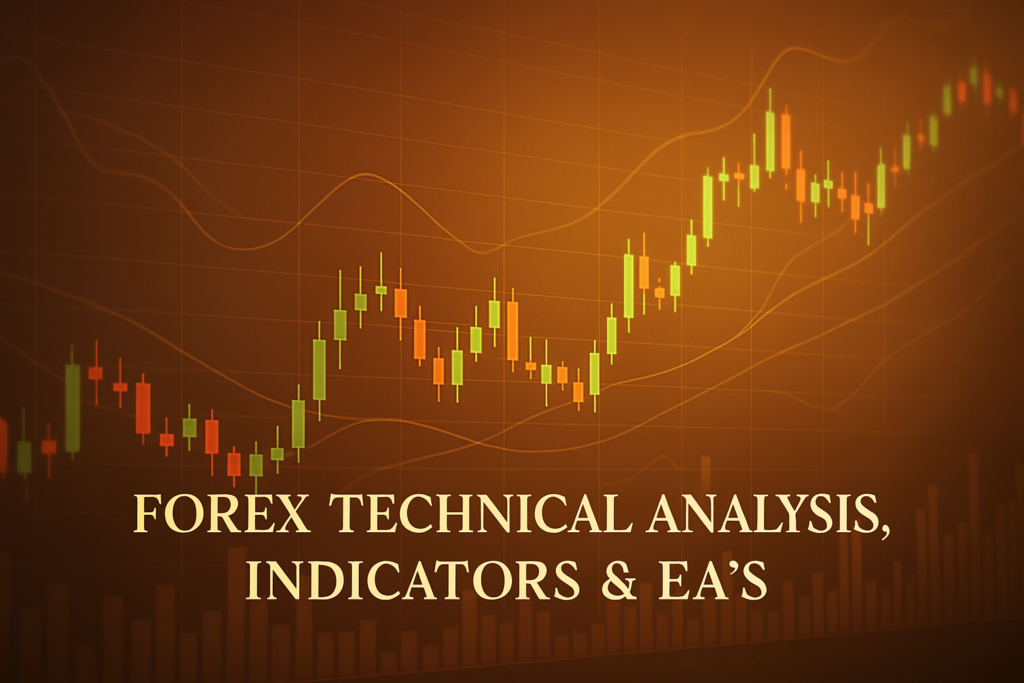
stochastic oscillator 5 3 3 helps traders identify trends, make informed decisions, and enhance their Forex trading strategies.
The stochastic oscillator 5 3 3 is a tool that many Forex traders use to analyze market trends. It helps them see when an asset might be overbought or oversold. Essentially, it’s like a compass guiding traders on when to buy or sell. This makes it a popular choice for both beginners and experienced traders who want to make informed decisions.
But, understanding the stochastic oscillator 5 3 3 isn’t always easy. Many traders find themselves confused by its signals and how to best implement it in their strategies. They often struggle to interpret the different readings and how they relate to price action. This can lead to missed opportunities or bad trades, which can be frustrating. That’s why it’s crucial to learn how to apply this indicator effectively.
In this article, we will cover the stochastic oscillator 5 3 3 in detail. We will break down its components, explain how it works, and review the advantages and disadvantages. We will also share trading strategies and tips to help you harness its power in your Forex trading journey.
Sometimes, traders face issues like Stop-limit orders not triggering as expected. Understanding tools like the stochastic oscillator can help prevent such issues.
What is a stochastic oscillator 5 3 3?
The stochastic oscillator 5 3 3 is a momentum indicator used in Forex trading. Think of it as a way to measure the speed and change of price movements. The “5” stands for the number of periods, “3” is the smoothing factor, and the second “3” is for the signal line. This means it looks back over 5 periods to calculate where the current price stands in relation to the recent highs and lows.
Types of stochastic oscillator 5 3 3
There are different types of stochastic oscillators, such as simple, exponential, and weighted. A simple stochastic oscillator gives equal weight to all periods, while an exponential one gives more importance to recent prices. Weighted oscillators, on the other hand, prioritize certain periods based on their significance. Choosing the right type depends on your trading strategy.
How stochastic oscillator 5 3 3 smooths out price action
The stochastic oscillator helps smooth out price action by averaging the values over a set number of periods. This means that sudden price spikes or drops are less likely to distort the indicator. As a result, traders can get a clearer picture of the overall trend without being misled by short-term fluctuations.
Common periods used and why
Common periods for the stochastic oscillator include 5, 14, and 21. The 5-period setting is quick and reacts faster to price changes, while the 14 and 21-period settings are slower and provide a more stable view. Beginners often start with a 14-period setting, which balances responsiveness and reliability.
The History of stochastic oscillator 5 3 3: How It Became Popular
Origin of stochastic oscillator 5 3 3
The stochastic oscillator was developed by George Lane in the late 1950s. He wanted to create a tool that could help traders understand the relationship between an asset’s closing price and its price range over a specific period. This idea laid the foundation for the stochastic oscillator 5 3 3, which has since become a staple in Forex trading.
When did traders start using it widely?
In the 1970s and 1980s, traders began to adopt the stochastic oscillator widely. It gained popularity as more people started trading stocks and Forex. Many traders appreciated its ability to identify potential reversal points in the market. As technology advanced, the oscillator became even easier to access and use.
Real-life stories
Many professional traders have shared stories of how the stochastic oscillator 5 3 3 helped them make significant profits. For example, a trader might use it to spot an oversold condition in a stock. By acting quickly, they could buy low and sell high, resulting in substantial gains. These success stories encourage new traders to learn and apply the oscillator in their strategies.
Advantages and Disadvantages of stochastic oscillator 5 3 3
Advantages:
- Helps identify trends easily: The stochastic oscillator 5 3 3 makes it simple to see if a market is trending upwards or downwards.
- Useful for dynamic support and resistance: It helps traders find key levels where prices might bounce back.
- Works well for crossover strategies: Traders can use crossovers between the lines to signal buy or sell opportunities.
Disadvantages:
- lags behind price movements: The stochastic oscillator 5 3 3 may not react quickly enough to sudden price changes.
- Can give false signals in sideways markets: In range-bound markets, the oscillator might mislead traders into making poor decisions.
How to Apply stochastic oscillator 5 3 3 on MT4 & MT5
Step-by-step guide to adding stochastic oscillator 5 3 3 on charts
To add the stochastic oscillator 5 3 3 on MT4 or MT5, follow these steps: Open your chart, go to the ‘Insert’ menu, choose ‘Indicators’, then ‘Oscillators’, and select ‘Stochastic Oscillator’. Adjust the settings to 5, 3, 3, and click ‘OK’. You’ll see the indicator appear on your chart.
Customizing stochastic oscillator 5 3 3 settings
You can customize the stochastic oscillator 5 3 3 to fit your trading style. Change the colors for better visibility or adjust the periods if you prefer a different timeframe. Experiment with these settings to find what works best for you.
Saving templates for easy application
Once you have your stochastic oscillator set up the way you like, save it as a template. Right-click on your chart, select ‘Template’, and then ‘Save Template’. This makes it easy to apply the same settings to other charts in the future.
5 to 7 Trading Strategies Using Only stochastic oscillator 5 3 3
Strategy 1: All Time Frame Strategy (M5 to D1)
Use the stochastic oscillator 5 3 3 across different time frames to spot trends. For example, if the oscillator shows overbought conditions on a 1-hour chart while the daily chart indicates an uptrend, consider taking a buy position.
Strategy 2: Trending Strategies
In a strong trend, look for the stochastic oscillator 5 3 3 to dip below 20 and then cross above it. This indicates a potential buying opportunity. For selling, wait for it to rise above 80 and then cross below.
Strategy 3: Counter Trade Strategies
For counter-trend trades, look for divergence between the price and the stochastic oscillator 5 3 3. If prices are making new highs while the oscillator is declining, it may signal a reversal. Act accordingly.
Strategy 4: Swing Trades Strategies
Use the stochastic oscillator 5 3 3 to identify swing trade entries. Buy when the oscillator crosses above 20 and sell when it crosses below 80. This method works well in volatile markets.
Strategy 5: Breakout Strategies
When the stochastic oscillator 5 3 3 indicates overbought or oversold conditions, watch for price breakouts. Enter a position once the price breaks above resistance or below support while confirming with the oscillator’s direction.
Strategy 6: Combining with Moving Averages
Combine the stochastic oscillator 5 3 3 with moving averages for additional confirmation. For instance, if the oscillator shows a buy signal and the price is above its 50-day moving average, it strengthens your trade decision.
5 to 7 Trading Strategies Combining stochastic oscillator 5 3 3 with Other Indicators
Strategy 1: M5 to D1 with RSI
Combine the stochastic oscillator 5 3 3 with the Relative Strength Index (RSI) for stronger signals. Use the stochastic for entry points and RSI for confirmation. If both indicators agree, it enhances your trade’s reliability.
Strategy 2: Trending Strategies with MACD
In a trending market, use the stochastic oscillator 5 3 3 with the Moving Average Convergence Divergence (MACD). Look for buy/sell signals when both indicators align, boosting your chances of success.
Strategy 3: Counter Trade Strategies with Bollinger Bands
When using Bollinger Bands, monitor the stochastic oscillator 5 3 3 for crossovers. If the price touches the lower band and the oscillator indicates oversold conditions, it may be a good time to buy.
Strategy 4: Swing Trades Strategies with Fibonacci Retracement
Using Fibonacci levels alongside the stochastic oscillator 5 3 3 can improve your swing trades. Enter trades when the price retraces to a Fibonacci level and the oscillator shows favorable conditions.
Strategy 5: Breakout Strategies with Average True Range (ATR)
Combine the stochastic oscillator 5 3 3 with ATR to gauge volatility. Enter a breakout trade when both indicators signal a potential price movement, ensuring you’re prepared for market shifts.
Additionally, understanding the vix 50 day moving average can further enhance your trading strategy.
Top 10 FAQs About stochastic oscillator 5 3 3
1. What does the stochastic oscillator 5 3 3 measure?
The stochastic oscillator 5 3 3 measures momentum by comparing a security’s closing price to its price range over a specific period.
2. How do I interpret the readings?
Readings above 80 indicate overbought conditions, while readings below 20 suggest oversold conditions. These can signal potential reversals.
3. Can I use it for day trading?
Yes! The stochastic oscillator 5 3 3 is great for day trading as it can help you identify quick buy and sell signals.
4. Is it suitable for all markets?
While it’s popular in Forex, the stochastic oscillator 5 3 3 can be applied to stocks and commodities as well.
5. How often should I check it?
Check the stochastic oscillator 5 3 3 regularly during your trading sessions, especially if you’re looking to enter or exit trades.
6. Can it be used with other indicators?
Yes, it works well in conjunction with other indicators like RSI, MACD, and moving averages to confirm signals.
7. What timeframe works best?
It depends on your trading style. Many traders use it on various timeframes, from M5 to D1, to find opportunities.
8. Can it provide false signals?
Yes, especially in sideways markets. Always confirm with other indicators before making a trade decision.
9. How do I set it up on my trading platform?
Follow the steps outlined earlier to easily add the stochastic oscillator 5 3 3 to your charts on MT4 or MT5.
10. Should I practice before trading live?
Absolutely! Use demo accounts to practice and understand the stochastic oscillator 5 3 3 before risking real money.
Conclusion
In summary, the stochastic oscillator 5 3 3 is a powerful tool in Forex trading. It helps identify potential buy and sell opportunities by analyzing price momentum. Understanding its advantages and disadvantages allows you to make more informed decisions.
As you explore trading strategies, remember to practice and test them before using real money. The more you learn about the stochastic oscillator 5 3 3, the better you will become at navigating the Forex market.
So, gear up and start experimenting with the stochastic oscillator 5 3 3 in your trading journey!
Stay ahead of the game by reading expert-backed advice on this topic OANDA, Action Forex
Expand Your Knowledge
- 📌 Forex Trading Learning Road Map
- 📌 Forex Trading Course with no Fees
- 📌 Forex Trading Issues, Problems, and Solutions
- 📌 Forex Daily Forecast & Live Updates
- 📌 Forex Fundamental & News Analysis: Tomorrow’s Market Movers & Trade Opportunities
- 📌 Forex Education Hub: Learn & Profit
- 📌 Forex Technical Analysis, Indicators & EA’s
Start Trading Today
Ready to take your forex trading to the next level? Open an account with Exness, one of the most trusted platforms in the industry. 👉 Sign Up Now and trade with confidence!
My recommended broker stands out with ultra-low spreads for beginners, instant withdrawals, and zero spread accounts for pro traders.
Trusted since 2008, lightning-fast execution, no hidden fees, and a secure, transparent trading environment—giving you the edge you need to succeed. 🚀
YouTube Video Library: Related Videos
Note: The video above is embedded from YouTube and is the property of its original creator. We do not own or take responsibility for the content or opinions expressed in the video.



